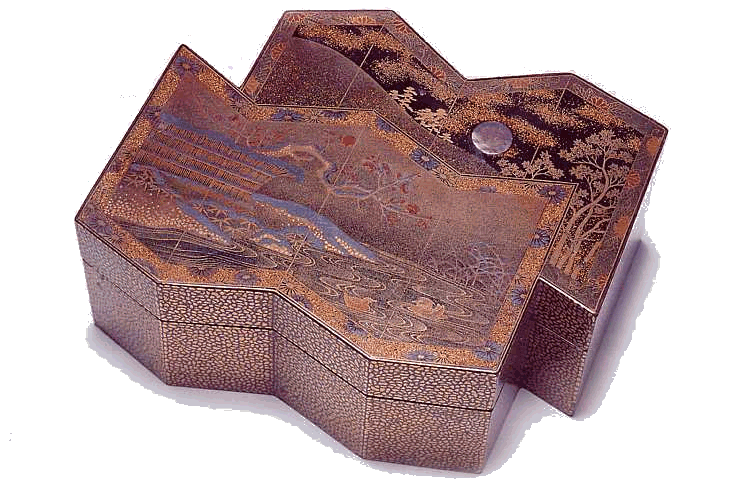
Gold lacquer kogo in byobu form
Length: 3.5" (8.9 cm) — Japan, early 19th century (Edo period)
Ex Charles A. Greenfield collection
Screen play...

Gold lacquer kogo in byobu form
Length: 3.5" (8.9 cm) — Japan, early
19th century (Edo
period)
Ex Charles A. Greenfield collection
Screen play...
The gorgeous Japanese gold lacquer kogo (container for
precious incense) depicted here exhibits a sophisticated play on image and
meaning. The unique perspective consists of two opened byobu (folding
screens), one partially in front of the other. The dynamic silhouette that
results from the two four-fold forms is matched by the breathtaking imagery on
each "screen". Even the traditional textile borders of the byobu are
reproduced in lacquer, with an Imperial chrysanthemum pattern.
Joined forms often have a marital allusion in Japanese art, and this is enhanced
by the motif of the screen in the foreground. Mandarin ducks, a symbol of wedded
bliss as they mate for life, are shown in a charming scene executed in flawless
togidashi (flush design lacquer) technique. The ducks swim on a rippled
pond, beneath snow-covered plum trees that represent longevity. The screen in
the background depicts the full harvest moon of autumn, with its promise of
abundance. This portrayal of the moon (favorite in the painterly tradition) is
formed by the artist with silver takamaki-e (relief lacquer). The sides
of the kogo are finished in stunning gyobu-nashiji, a mosiac effect of
irregular gold flakes artfully placed individually.